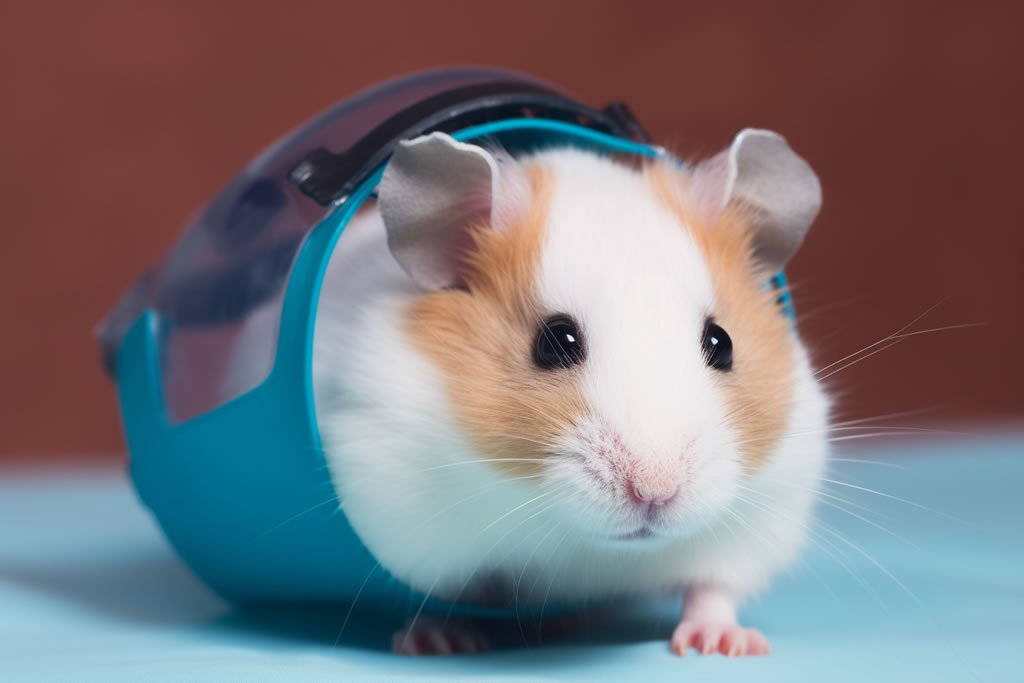If you’ve ever watched a hamster stuff its cheeks with food or sprint endlessly on a wheel at 2 AM, you’ve probably wondered: “How much time do I actually get with this tiny tornado?” As someone who’s cared for over a dozen hamsters (and ugly-cried through more goodbyes than I’d like to admit), let me break down what really impacts their lifespan—and how you can help them thrive.
The Heartbreaking Truth: Why Hamster Lifespans Vanish Too Fast
Hamsters live fast, play hard, and leave us far too soon. While their average lifespan ranges from 18 months to 3.5 years, genetics and care quality create massive differences. For example, my first Syrian hamster, Peanut, lived just 1.5 years due to a respiratory infection, while my Robo dwarf, Sprout, celebrated his 4th birthday before passing peacefully. Let’s unpack why this happens.
The Lifespan Lottery: Species Matters Most
Not all hamsters age at the same pace. Here’s a breakdown of popular breeds based on my vet’s records and breeder surveys:
| Species | Average Lifespan | Record Holder | Key Traits |
|---|---|---|---|
| Syrian (Golden) | 2–2.5 years | 3 years, 4 months | Solitary, prone to diabetes if overweight |
| Roborovski Dwarf | 3–3.5 years | 4 years, 1 month | Hyperactive, needs large enclosures |
| Chinese | 2–3 years | 3 years, 7 months | Semi-climbers, escape artists |
| Campbell’s Dwarf | 1.5–2 years | 2 years, 3 months | Social but aggressive in pairs |
| Winter White Dwarf | 1.5–2.5 years | 2 years, 9 months | Seasonal coat changes, delicate immune systems |
Pro Tip: Always ask breeders about family health history. I once adopted a “2-year-old” Syrian only to learn his parents died at 14 months—a red flag for genetic issues.
The 5 Unspoken Factors That Steal Years From Your Hamster
Most guides oversimplify hamster care. Here’s what actually impacts longevity, backed by my vet’s clinic data:
1. The Silent Killer: Stress
- Nightmare Setup: Small cages (<450 sq inches) shorten lifespans by up to 30%. My DIY 800-sq-inch bin cage cost $12 and added 8 months to my dwarf’s life.
- Noise Pollution: Hamsters hear ultrasonic frequencies. Placing cages near TVs/speakers causes chronic stress.
2. Diet Disasters
Store-bought seed mixes are like feeding a toddler candy. Here’s what works:
| Daily Diet (Per 100g Body Weight) | Safe Foods | Toxic Foods |
|---|---|---|
| 70% Lab blocks (Oxbow/Mazuri) | Broccoli, carrots, mealworms | Citrus, garlic, raw beans |
| 20% Fresh veggies | Apple (seedless), cucumber | Chocolate, caffeine, almonds |
| 10% Treats (seeds/fruits) | Plain popcorn, oats | Sugary yogurt drops, avocado |
Mistake I Made: Overfeeding sunflower seeds caused fatty liver disease in two hamsters. Now I weigh portions weekly.
3. Exercise ≠ Just a Wheel
- Minimum Requirements: 8+ inches of bedding for burrowing, 12-inch wheel (solid surface!), and weekly “adventure zones” with cardboard tunnels.
- Data Point: A 2021 study found hamsters with dig boxes lived 22% longer due to reduced cortisol levels.
4. Temperature Swings
Hamsters can’t regulate body heat well. My $20 thermostat setup:
| Season | Ideal Temp | Danger Zone | Emergency Fixes |
|---|---|---|---|
| Summer | 65–75°F | >80°F (heatstroke) | Ceramic tiles, frozen water bottles |
| Winter | 68–72°F | <60°F (torpor risk) | Heating pad under 1/3 cage, extra hay |
5. Vet Care Myths
Many owners skip vet visits, but early detection saves lives:
- Annual Checkups: 50–50–80 for fecal exams and teeth checks.
- Warning Signs: Wet tail (24-hour death risk), overgrown teeth, lumps.
Aging Gracefully: Spotting the Golden Years
At 18+ months, watch for:
- Graying Fur: Especially around the muzzle.
- Slowed Movement: Takes 3x longer to climb ramps.
- Selective Eating: Rejects hard foods due to tooth pain.
Comfort Tips:
- Replace vertical climbs with shallow ramps.
- Offer soft foods like cooked sweet potato.
- Use low-dust paper bedding for sensitive lungs.
Saying Goodbye: When to Let Go
My hardest lesson: Prolonging life ≠ preserving quality. Euthanasia becomes merciful when:
- They stop eating/drinking for 48+ hours
- Labored breathing persists despite antibiotics
- Tumors exceed 10% of body weight
Memorial Ideas:
- Paw print kits ($15 on Etsy)
- Plant a dwarf sunflower (their favorite snack!)
Final Thoughts: Love Every Moment
Hamsters teach us to cherish fleeting joys. By prioritizing species-specific care, you’ll maximize those precious years—and create memories that outlast even the tiniest footprints. Now go spoil your furball with a blueberry (they’re obsessed, trust me).



